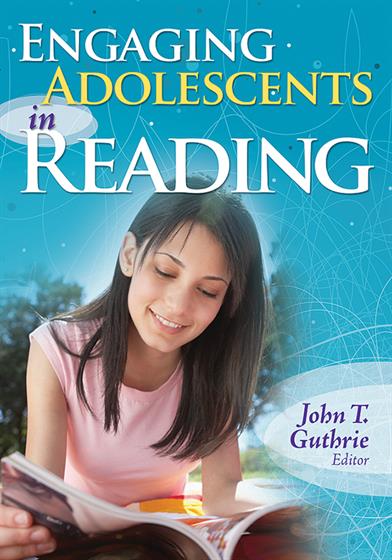Preface
Acknowledgments
About the Editor
About the Contributors
1. Reading Motivation and Engagement in Middle and High School: Appraisal and Intervention
Dilemmas of Students’ Motivation and Engagement in School Reading
Challenge: Teacher Support for Motivation and Engagement
Meaning Is Motivating: Classroom Goal Structures
Control and Choice: Supporting Self-Directed Reading
Reading Is Social: Bringing Peer Interaction to the Text
Self-Efficacy: Building Confident Readers
Interest in Reading: Potency of Relevance
Struggling Readers: Boosting Motivation in Low Achievers
Merging Engagement Support Into Structured Classroom Management
Next Steps: Transforming Classrooms and Schools
2. Meaning Is Motivating: Classroom Goal Structures
Providing Mastery Goals
Making Tasks Relevant
Using Hands-On Activities
Mastery vs. Performance Motivation: Theory and Research
Transforming Text to Meaning
Scaffolding Mastery Motivation
Providing Reteach Opportunities
Rewarding Effort Over Performance
3. Control and Choice: Supporting Self-Directed Reading
Providing Control and Choice in Instruction
Overview of Instructional Practices
Ownership of Text
Options for How to Learn From Text
Input Into Curriculum
Student Self-Direction and Shared Control: Theory and Research
Self-Selection of Knowledge Displays
Voice in Standards for Evaluating
Inquiry Projects
Scaffolding Control and Choice for Diverse Students
Order in the Classroom!
Roles for Administrators
4. Reading Is Social: Bringing Peer Interaction to the Text
Open Discussions
Student-Led Discussions
Collaborative Reasoning
Why Social Interaction? Research and Theory
Arranging Partnerships
Socially Constructing Class Management
Scaffolding Social Motivation Over Time
5. Self-Efficacy: Building Confident Readers
Recognizing the Gap
Matching Text to Students
How Self-Efficacy Develops in a Classroom: Theory and Research
Establishing Initial Confidence
Setting Realistic Goals
Assuring Enabling Skills
6. Interest in Reading: Potency of Relevance
Rationale for Relevance
Real-World Connection
Personalizing With Questioning
Extending Intrinsic Interests
How Relevance Works: Theory and Evidence
Self-Expression
Puzzling
7. Growing Motivation: How Students Develop
Context Counts
Situated Motivation Is Significant
Motives Move From Outside to Inside
Internal Motivation Drives Achievement
General Motivation Is Stable
Global Internal Motivation Declines Across Time
Cause and Effect?
8. Struggling Readers: Boosting Motivation in Low Achievers
Our Challenges
Varieties of Unmotivated Readers
Externally Motivated Low Achievers
Approaches to Motivation for Moderately Struggling Readers
Low Achievers Who Resist Reading
Approaches to Motivation for Resistant Students
A Learning Curriculum for Struggling Readers
Resistant Students Who Struggle to Recognize Words
Instructional Approaches for Resistant Students With Word Reading Deficits
9. Next Steps for Teachers
Identifying One Motivation to Address
Selecting Several Instructional Practices to Initiate Motivation
Planning Short-Term Change
Planning Long-Term Change
Phasing in Support for All Motivations and Implementing All Practices
Tools for Teachers
Questionnaires
Resources
References
Index



